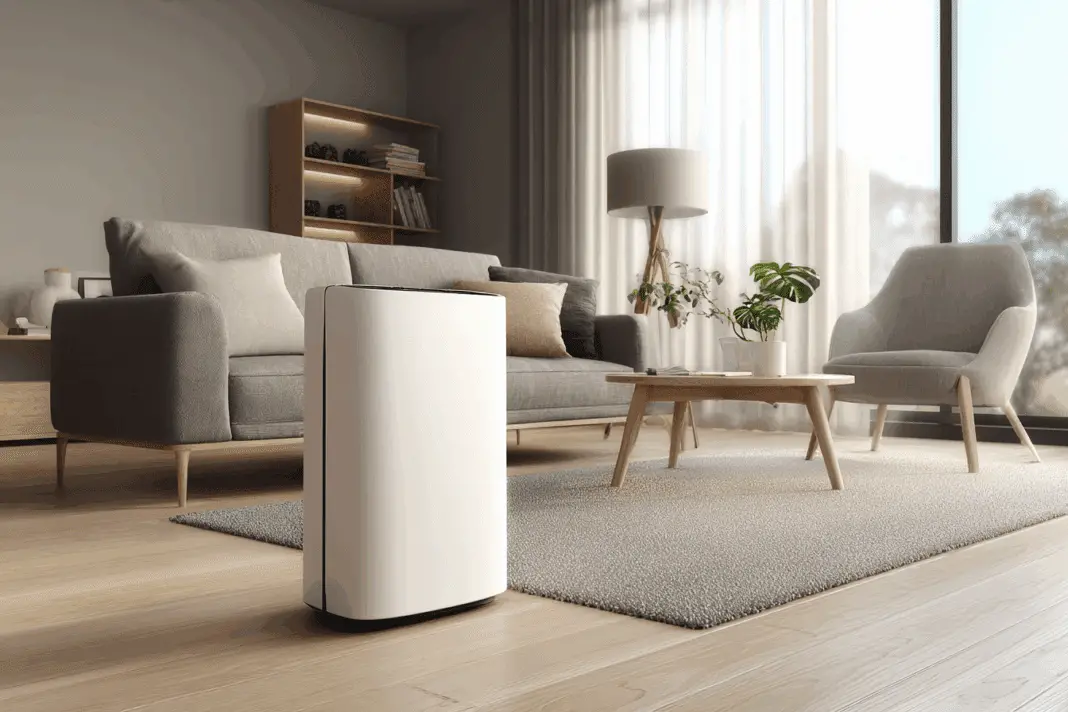That expensive dehumidifier sitting in the corner of your basement might be working at only half its potential. Most people assume any spot will do for these moisture-busting machines, but placement makes the difference between a unit that struggles to keep up and one that transforms your home’s air quality. The wrong location can waste electricity, reduce efficiency, and leave you wondering why your humidity problems persist despite owning a quality appliance.
Central locations beat corner placements every time
Picture walking into a room where the dehumidifier sits tucked away in the corner, almost apologetically hidden from view. This common placement mistake reduces the unit’s ability to circulate air effectively throughout the entire space. Dehumidifiers work by pulling moisture from the air and redistributing dry air back into the room, but corners create dead zones where humid air can linger untreated.
The sweet spot for any dehumidifier is somewhere near the center of the room where air can flow freely from all directions. This central positioning allows the unit to draw moisture more efficiently and distribute dry air evenly to all corners of the space. Even in smaller rooms, pulling the unit just a few feet away from walls and corners can dramatically improve its performance and reduce the time needed to reach optimal humidity levels.
Kitchens and bathrooms create equipment confusion
The steamy aftermath of a long shower or the humidity from boiling pasta might seem like obvious targets for dehumidifier placement. However, positioning these units directly in kitchens and bathrooms can actually work against their intended purpose. The constant temperature fluctuations and sudden moisture bursts confuse the internal sensors that regulate when the unit turns on and off.
Most standard dehumidifiers aren’t designed to handle the extreme conditions found in these spaces. The steam and heat can make the humidistat work overtime, leading to higher electricity bills and potentially shorter equipment life. Instead, position the unit in adjacent hallways or nearby rooms where it can still capture moisture that spreads from these high-humidity zones without being overwhelmed by direct exposure to steam and cooking vapors.
Airflow restrictions kill performance fast
That bookshelf, storage boxes, or furniture clustered around your dehumidifier might be creating an invisible barrier to proper air circulation. These units need at least 12 inches of clearance on all sides to function properly, but many homeowners treat them like decorative objects that can be squeezed into tight spaces. Restricted airflow forces the motor to work harder while reducing the amount of moisture the unit can extract from the air.
Think of your dehumidifier as needing to breathe just like any other mechanical device. When airflow gets restricted, the unit can overheat and may shut down completely as a safety measure. This breathing room becomes even more critical in cluttered basements or storage areas where people tend to pile items around the unit over time. Regular checks to ensure adequate clearance can prevent costly repairs and maintain optimal efficiency throughout the unit’s lifespan.
Basements need strategic positioning considerations
Basement placement seems like a no-brainer since these underground spaces typically harbor the most moisture problems in homes. However, the specific location within the basement can make or break the unit’s effectiveness. Many people default to placing the dehumidifier near the water heater or furnace, thinking these areas need the most attention, but heat sources can actually interfere with the unit’s sensors and create uneven moisture removal.
The ideal basement position balances accessibility for maintenance with optimal air circulation patterns. Areas near the center of the basement typically work best, especially if there’s good airflow from HVAC vents or natural air movement. Consider proximity to floor drains if your unit has continuous drainage capability, but avoid placing it directly under pipes or in areas where water might drip onto the equipment during plumbing issues or condensation events.
Laundry room placement requires careful timing
Laundry rooms generate significant moisture from washing machines, dryers, and wet clothes, making them tempting targets for dehumidifier placement. While these spaces do benefit from moisture control, positioning the unit too close to active laundry operations can create problems. Dryer exhaust, detergent vapors, and lint can clog filters faster than normal and may damage sensitive internal components over time.
The key to successful laundry room dehumidifying lies in strategic positioning and timing. Place the unit away from direct dryer exhaust and wet laundry that might drip onto the equipment. Running the dehumidifier during off-peak laundry hours or positioning it to capture residual moisture after laundry sessions can provide effective humidity control without exposing the unit to the harsh conditions present during active washing and drying cycles.
Bedroom placement affects sleep quality directly
Bedrooms present unique challenges for dehumidifier placement because the unit needs to be effective without disrupting sleep. Many people position these units right next to the bed for maximum moisture control, but the constant cycling noise and air movement can interfere with rest. Additionally, placing the unit too close to sleeping areas can create drafts or dry conditions that affect comfort during the night.
The optimal bedroom strategy involves finding locations that balance effectiveness with noise considerations. Positioning the unit across the room from the bed, preferably near a closet or dresser area, can provide moisture control without creating sleep disruptions. Some models offer quiet or sleep modes that reduce fan speed and noise levels during nighttime hours, making closer placement more feasible for those who need aggressive humidity control.
Living areas need aesthetic and functional balance
Living rooms and family rooms pose the challenge of integrating moisture control equipment into spaces designed for comfort and appearance. Many homeowners try to hide dehumidifiers behind furniture or in entertainment centers, but these concealed locations severely limit air circulation and reduce effectiveness. The temptation to prioritize aesthetics over function often leads to disappointing results and higher energy costs.
Modern dehumidifiers come in more attractive designs that don’t require complete concealment to maintain room aesthetics. Strategic placement near seating areas but away from direct foot traffic can provide effective moisture control while remaining relatively unobtrusive. Some homeowners successfully integrate these units into room design by treating them as functional furniture pieces, positioning them near bookshelves or side tables where they blend into the overall decor without sacrificing performance.
Multi-level homes require strategic unit distribution
Homes with multiple floors create unique humidity patterns that single dehumidifier placement can’t always address effectively. Heat rises and carries moisture with it, creating different humidity zones throughout the house. Many homeowners make the mistake of placing one large unit in the basement and expecting it to control moisture throughout the entire home, but this approach often leaves upper floors inadequately protected.
Understanding your home’s specific air circulation patterns helps determine whether single or multiple unit placement works best. Homes with good HVAC circulation might benefit from central basement placement, while houses with limited air movement between floors may need smaller units on each level. Monitoring humidity levels in different areas helps identify problem zones and guides decisions about unit placement or whether additional equipment might be necessary for comprehensive moisture control.
Getting the most from your dehumidifier investment starts with understanding that placement directly impacts performance and efficiency. The right location can cut energy costs, extend equipment life, and create more comfortable living conditions throughout your home. Take time to evaluate your space and test different positions to find what works best for your specific needs and layout.

